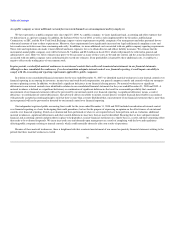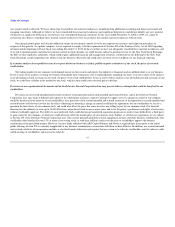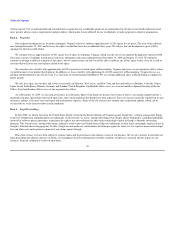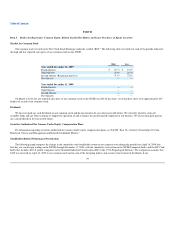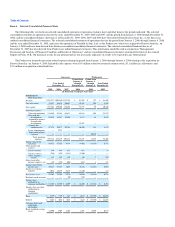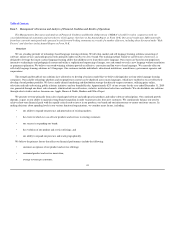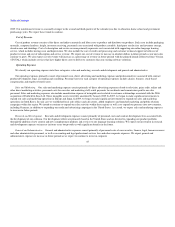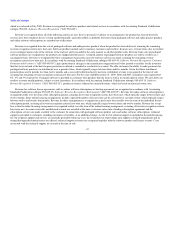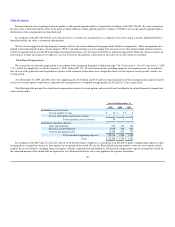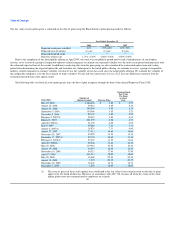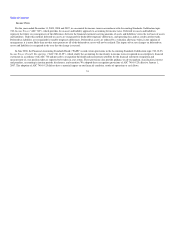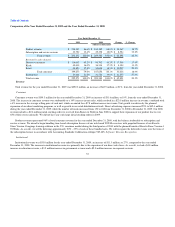Rosetta Stone 2009 Annual Report Download - page 46
Download and view the complete annual report
Please find page 46 of the 2009 Rosetta Stone annual report below. You can navigate through the pages in the report by either clicking on the pages listed below, or by using the keyword search tool below to find specific information within the annual report.
Table of Contents
Item 7. Management's Discussion and Analysis of Financial Condition and Results of Operations
This Management's Discussion and Analysis of Financial Condition and Results of Operations ("MD&A") should be read in conjunction with our
consolidated financial statements and notes thereto which appear elsewhere in this Annual Report on Form 10-K. Our actual results may differ materially
from those currently anticipated and expressed in such forward-looking statements as a result of a number of factors, including those discussed under "Risk
Factors" and elsewhere in this Annual Report on Form 10-K.
Overview
We are a leading provider of technology-based language learning solutions. We develop, market and sell language learning solutions consisting of
software, online services and audio practice tools primarily under our Rosetta Stone brand. Our teaching method, which we call Dynamic Immersion, is
designed to leverage the innate, natural language learning ability that children use to learn their native language. Our courses are based on our proprietary
interactive technologies and pedagogical content and utilize a sophisticated sequencing of images, text and sounds to teach a new language without translation
or grammar explanation. We believe our award-winning solutions provide an effective, convenient and fun way to learn languages. We currently offer our
self-study language learning solutions in 31 languages. Our customers include individuals, educational institutions, armed forces, government agencies and
corporations.
The strength and breadth of our solutions have allowed us to develop a business model that we believe distinguishes us from other language learning
companies. Our scalable technology platform and our proprietary content can be deployed across many languages, which have enabled us to cost-effectively
develop a broad product portfolio. We have a multi-channel marketing and distribution strategy that directly targets customers, utilizing print, online,
television and radio advertising, public relations initiatives and our branded kiosks. Approximately 82% of our revenue for the year ended December 31, 2009
was generated through our direct sales channels, which include our call centers, websites, institutional sales force and kiosks. We also distribute our solutions
through select retailers such as Amazon.com, Apple, Barnes & Noble, Borders and Office Depot.
We generate revenue primarily from sales of packaged software and audio practice products and online software subscriptions. Our continued growth
depends, in part, on our ability to maintain strong brand recognition in order to generate sales from new customers. We continuously balance our need to
achieve short-term financial goals with the equally critical need to invest in our products, our brand and our infrastructure to ensure our future success. In
making decisions about spending levels in our various functional organizations, we consider many factors, including:
our ability to expand our presence and penetration of existing markets;
the extent to which we can sell new products and services to existing customers;
our success in expanding our brand;
the evolution of our product and service offerings; and
our ability to expand our presence and reach geographically.
We believe the primary factors that affect our financial performance include the following:
customer acceptance of our product and service offerings;
continued product and service innovation;
average revenue per customer;
43
•
•
•
•
•
•
•
•




